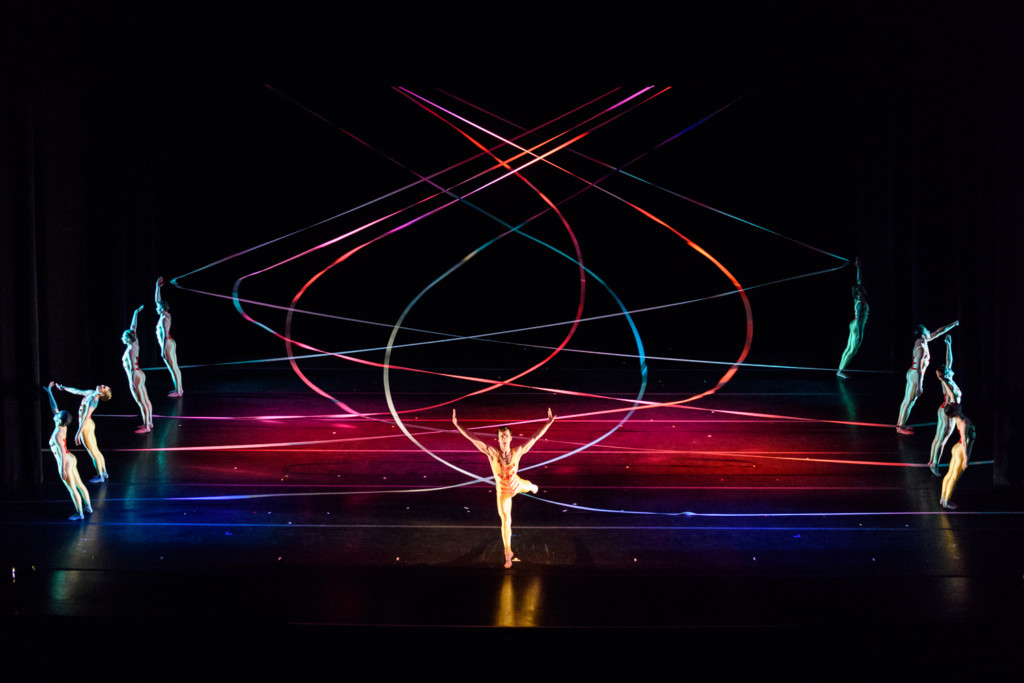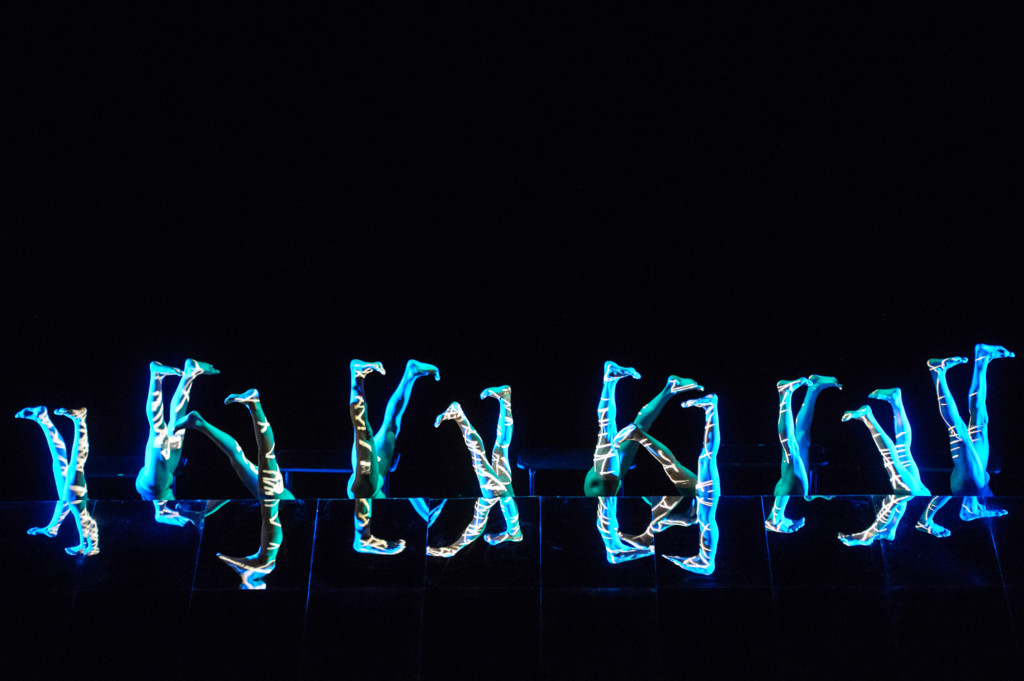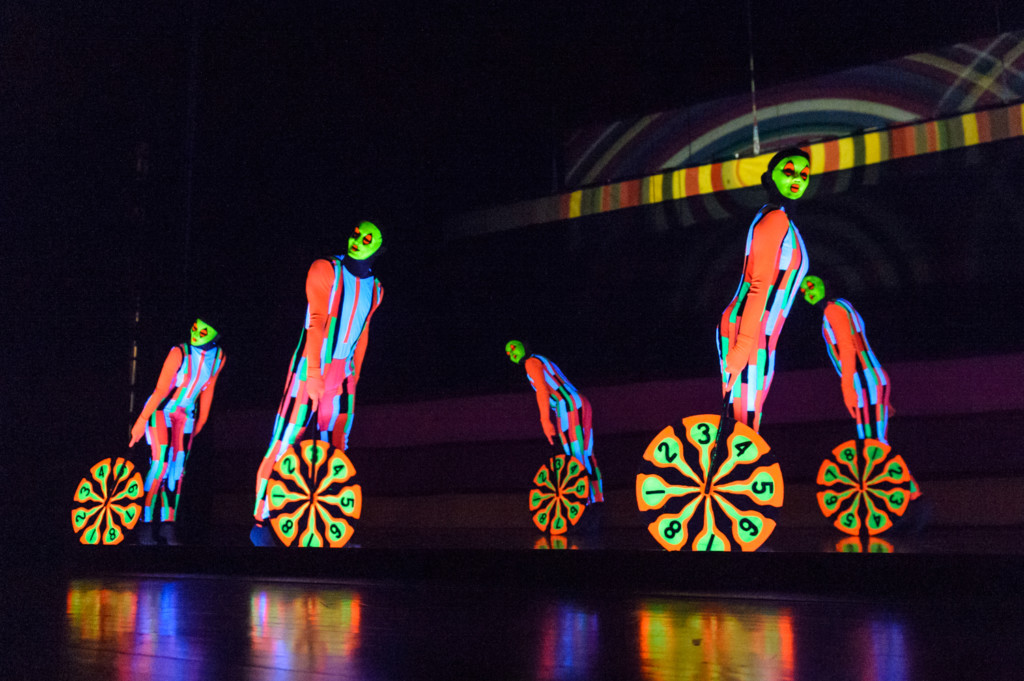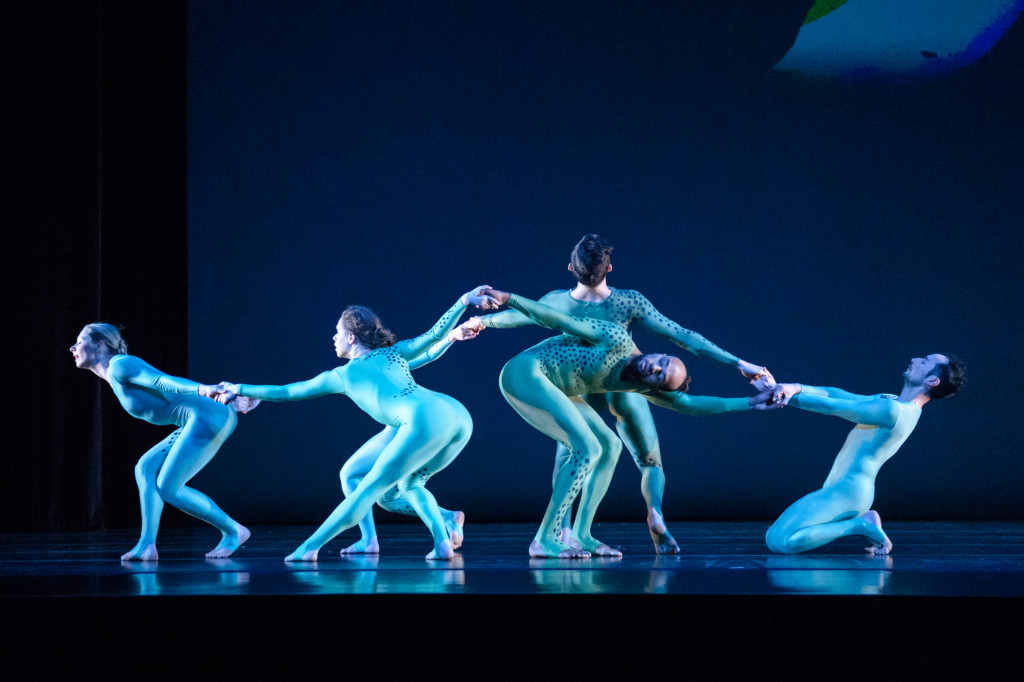In the middle of a season flanked by two programs of world premieres of dance works that expand the genre’s story-telling abilities, the Ririe-Woodbury Dance Company will present Strata, encompassing some of the best known works of Alwin Nikolais, one of the 20th century’s most forward-looking choreographers.
It has been 25 years since Nikolais died but Daniel Charon, the company’s artistic director, says the works demonstrate the famed choreographer’s prescient vision that inspired a broad movement of multi-media dance compositions performed by the Blue Man Group, Cirque du Soleil, Pilobolus and Momix. “The roots of his work have so many influences today,” he explains. “He directed and conceived every element including multimedia, costumes, music and lighting techniques in his work, in addition to the choreography.”

Nikolais was the dance world’s counterpart to Richard Wagner, the German composer of opera in the 19th century who conceived his work as Gesamtkunstwerk (translated as, total work of art), he adds.
“Like a Steve Jobs of the theater, Nikolais was a master mind,” Rachel Straus described him in a Musical America website post. “Indeed, before the invention of laser beams, light shows and computer-generated images, Nikolais figured out how to rig a lighting plot and employ unconventional material to generate that which hadn’t yet been discovered by engineers. Instead of clicking and coding, his dancers designed the space with their bodies, and props, to produce a vortex of intersecting lines. Nikolais’ futuristic artwork is at its most dazzling when the dancers frame themselves inside their own sets designs (or interfaces).”

In many ways, Nikolais expressed the gist of the meaning in Marshall McLuhan’s famous phrase, “the medium is the message.” Charon notes that Nikolais would incorporate the old film strip projectors that used to be the essential equipment in every classroom. For the company to return to a fresh performance of Nikolais’ work is not that much different from the nostalgic affection many enjoy in rediscovering vinyl records or the art of writing a letter by hand or the resurgent interests in calligraphy.
Ririe-Woodbury has a unique role in preserving Nikolais’ work, which started with the efforts of Shirley Ririe and Joan Woodbury who established the company in 1964 and had studied with him. After Nikolais’s death, the Nikolais/Louis Foundation split into two entities but it remains that Ririe-Woodbury is the only American dance company to absorb the works into its permanent repertoire. The decision was made by Murray Louis, who was Nikolais creative and life partner for many years, and Alberto del Saz, a former Nikolais company dancer who has ensured that his mentor’s artistic legacy is sustained.

The Nikolais works slated for Strata span a 30-year creative period — Tensile Involvement (1955), Gallery (1978), Mechanical Organ III (1983) and Crucible (1985). The company periodically presents Nikolais’ choreography, including a 2016 performance in New York City. A review in The New York Times noted that, “the performers, generous and game, bring the dances into the present. They also work as a group, and this all-for-one mentality seems crucial: Nikolais, who revered abstraction, stood for motion over emotion.”
In Tensile Involvement, for example, the dancers are attached to elastic strings on their hands and feet so the movements create the impression of watching the performers move in planes of infinite space. Lighting takes on an even prominent role than usual in staging, as in Gallery, for example, where the effects generate a host of presumed apparitions of floating heads, sometimes resembling an arcade shooting gallery at a fair or amusement park. In Crucible, a mirror emphasizes disembodied effects as the dancers spiral and fold themselves continuously. Mechanical Organ is like a mischievous exercise of dance play, rendered in several sections, as dancers form the shapes as they link to each other that almost seems to recreate the movement of a calliope being played.

Two performances of Strata will be offered on Friday and Saturday, Feb. 2 and 3, at 7:30 p.m. in the Janet Quinney Lawson Capitol Theatre.
Coinciding with Strata, the company offers its hour-long bilingual family concert Elements/Elementos! on Feb. 3 at 1 p.m., also at the Capitol Theatre.
As mentioned last fall at The Utah Review, Ririe-Woodbury’s family matinee series was initiated as “a great opportunity for newcomers to dance so they can dabble their feet in the water,” Charon says. “Families can bring their babies and kids.” A key part of this family performance will be how the narrators, Ai Fujii Nelson, handling the English language portion, and Juan Carlos Claudio, handling the Spanish language portion, will be integrated into the stage action. Nelson, the company’s education director, and Claudio, outreach director, are trained dancers as well.
“In doing the narration in both languages, we want to make the experience more accessible to general audiences,” Claudio explains, “especially to those families who might feel a little isolated or do not think that a dance performance would be suited to them.” He also says it is important to keep the flow and momentum of the performance going continuously, so both narrators also are involved in the movement on stage. Likewise, in the narration, a sentence might be started in English and completed in Spanish, and vice versa.

Elements/Elementos! perhaps can be best described as a fast-paced overview of the scientific and engineering aspects of STEM rendered in modern dance over an hour-long program. The works touch variously on marine biology, meteorology, physics, and other classic scientific concepts. The performance includes works and excerpts including Nikolais’ Tensile Involvement and Gallery as well as Physalia, a 1977 work originally choreographed by Moses Pendleton and Alison Chase, co-founders of Pilobolus. Physalia incorporates extensive acrobatic choreography to suggest the imagery of the work’s title, which refers to a Portuguese man-of-war. It’s often mistaken as a jellyfish but in fact, it is what marine biologists refer to as a siphonophore, an animal made up of a colony of organisms working together – an apt description of the creative intent behind Physalia.
The matinee also includes selections from Charon’s Shift and Storm, Tandy Beal’s Heisenberg Principle and Miguel Azcue’s You and The Space Between.
For more information about both programs, see the Ririe-Woodbury Dance Company website and ticket information at ArtTix.

